As long as women consent to be ruled unjustly, they will be. Emmeline Pankhurst (1858 – 1928)
In the British Empire of the second half of the 19th century, it was Queen Victoria who has ruled England for decades. Yet women are seen as "second-class citizens .
Whether they are rich or poor, peasant or bourgeois, worker or noble, they have no more rights than a criminal, a child or even a mentally ill person . In an equivalent profession, they earn a third what a man earns and have no access to education. The married woman? She no longer belongs , “her identity is subordinated to that of her husband .
This retrograde conception of women, some will try, at any price, to make it evolve. They are therefore convinced that this improvement in their living conditions requires women's right to vote. A look back at the history of the suffragettes and on the fight of these Englishwomen which allowed the United Kingdom to finally access universal suffrage . That was a century ago.
The Suffragists:first campaigners for women's suffrage
Only well-to-do white men and owners have the right to vote in this constitutional monarchy that is then England. Even nobles, women only have the right to live in the shadow of their husbands.
They are rich enough but since they are women, they are excluded.
From 1884 , things are changing. A law grants them the right… to own their own body! Women therefore become individuals , and from then on they can legally claim all other rights.
That settles the affairs of a certain Millicent Garrett Fawcett . Born in 1847 into a rather liberal family, she campaigned from the 1870s for the right to vote for women. Widowed that same year 1884, she then devoted herself fully to politics.
Convinced that by putting pressure on the deputies, they will succeed in convincing them that they are fit to be part of the political system, Millicent educates women to the question of the right to vote:these groups of militant women became “the Suffragists”. By asking questions such as “Who makes the laws? », «Who decides who is a citizen and who is not? », « According to what criteria? the Suffragists undermined the whole system of Victorian England.
Read also:Victoria, the queen who did not like children

The objections are immediate. This “revolution appears to be a real threat. The role of women is different from that of men:they are above all wives destined to have children and take care of their homes. If women take care of politics, who will take care of the home? Those who dare to speak in public are called hysterical .
It is inconceivable for many men and women of the end of the 19th century, that women pass from the private sphere to the public sphere.
In 1897, Millicent Garrett takes the lead of a whole new organization which brings together all the suffragist societies of the country:the “National Union of Women’s Suffrage ". Under his leadership, the NUWS, which had both female and male supporters, became the main suffragist movement in the world.
Gathered under a single campaign for more efficiency, the Suffragists multiplied the militant actions, always in the legality. Selina Cooper , emblematic woman in the world of the textile industry , tried to mobilize working women in favor of women's suffrage and joined the suffragist movement.
In 1900, 29,859 signatures are presented to MPs in London. However, no improvement under the sky of politics. It has now been 30 years that Millicent Garrett Fawcett advocates for women's suffrage…
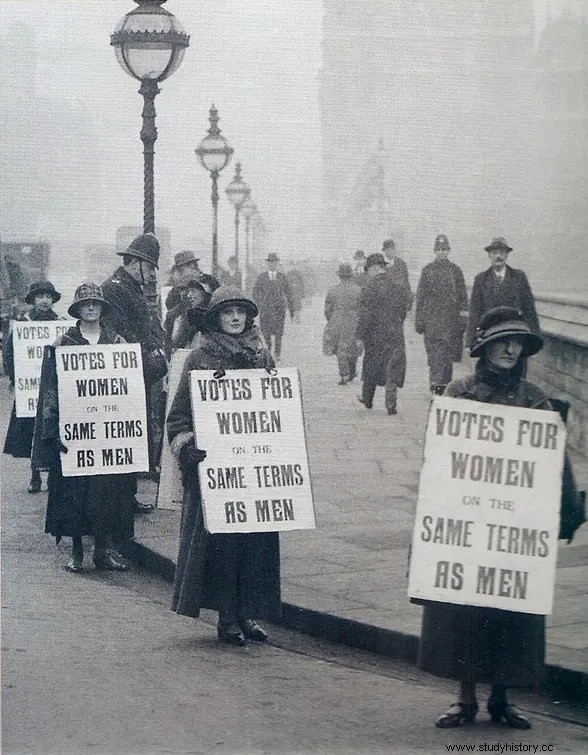
The Suffragettes:"actions, not words »
Other women have no intention of waiting another 30 years. On October 10, 1903, Emmeline Pankhurst founds, with her daughters Christabel, Sylvia and Adela , the Women’s Social and Political Union (WSPU).
Member of the Independent Labor Party , woman of character authoritative and strongly committed, Emmeline Pankhurst wants the WSPU to focus on concrete actions , hence their slogan:“actions, not words ". But his daughter Christabel want to go further. Like many women of her generation, she is frustrated with the legalistic methods of Millicent Garrett and her peers which she says have come to nothing.
In 1905, Christabel and a friend were ejected from a political meeting for raising the question of women's right to vote, raising their voices because no one deigned to answer them. Christabel spits on a policeman. This lack of respect is immediately turned into an offence:the young women are arrested and imprisoned , 7 days for Christa, 5 days for her friend. All the press is talking about it.
Realizing the power of demonstrations and outrageous actions, Emmeline Pankhurst agrees with her daughter, and opts for a strategy of confrontation .
Those who are pejoratively called "the Suffragettes" will now draw public attention to their cause by seeking to get people talking about them at any cost, for good or ill.
Theresa Billington Greig , a 28-year-old former teacher who has worked full-time for the organization since its inception, says it's almost a moral duty for women than breaking the law, since “they were made without them and against them. »
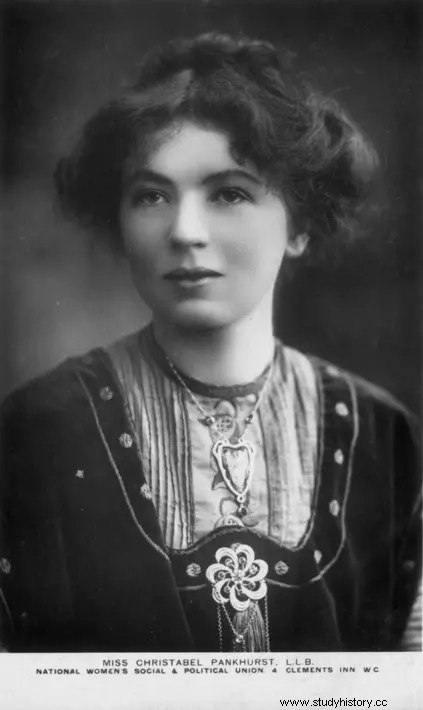
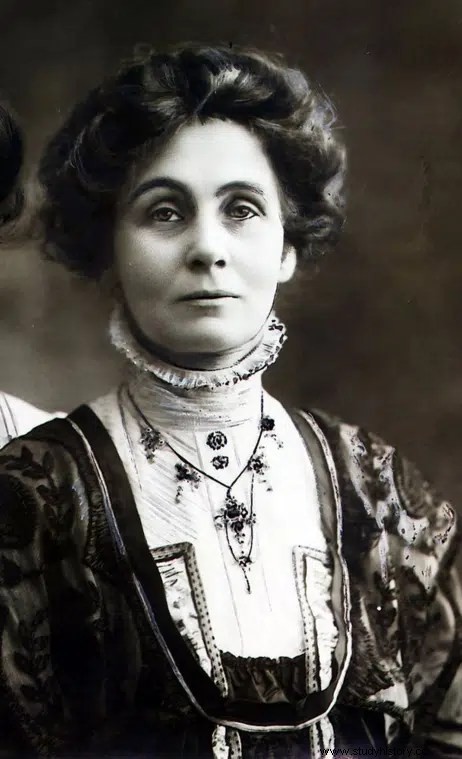
👉 Also discover the story of Lillie Langtry, who fought for women's suffrage.
Suffragists and suffragettes:legal activism VS. violent activism
The Suffragettes multiply the prohibited demonstrations , untimely speeches, interruptions of public meetings, follow one another at the gates of Parliament or street lampposts:deeply shocking behavior, but it is now impossible for the Government to ignore the movement.
Millicent Garret, leader of the Suffragists, does not endorse or collaborate with Emmeline Pankhurst, leader of the Suffragettes. Although she acknowledges that the Suffragettes advance the cause of women in a meteoric way, Millicent continues to believe in her balanced and legal, constitutionalist methods. On February 7, 1907, the Suffragists organized a large demonstration:5,000 women of all social backgrounds and all ages walk through London, in the cold and in the rain.
In 1906, the Liberal Party took power after 11 years of Conservative rule. Finally ! But the new hopes are quickly disappointed:this government is certainly reformist, but not for women, quite the contrary. The Prime Minister, Herbert Henry Asquith , is anti Suffragists and Suffragettes . He plays on the fact that women do not want this right to vote. If they do not mobilize in sufficient numbers, it is because they are not interested!
The Suffragettes decide to take up the challenge. On June 21, 1908, a gigantic demonstration took place in Hyde Park under a radiant sun. 50,000 women in white dresses parade, 200,000 people are present. But the Government remains deaf , no one wants to commit to women’s rights. Even the Labour Party hesitates between fighting for workers' rights or integrating women workers into it. After years of struggle, the disappointment is heavy. The Suffragettes lose activists, who revolt against the violent ways employed by the WSPU, and the overly despotic personality of its founder Emmeline Pankhurst.
Theresa Billington Greig breaks out and created the "Woman Freedom League » :through calmer actions, its members militate passively by refusing to participate in the population census or to pay their taxes.
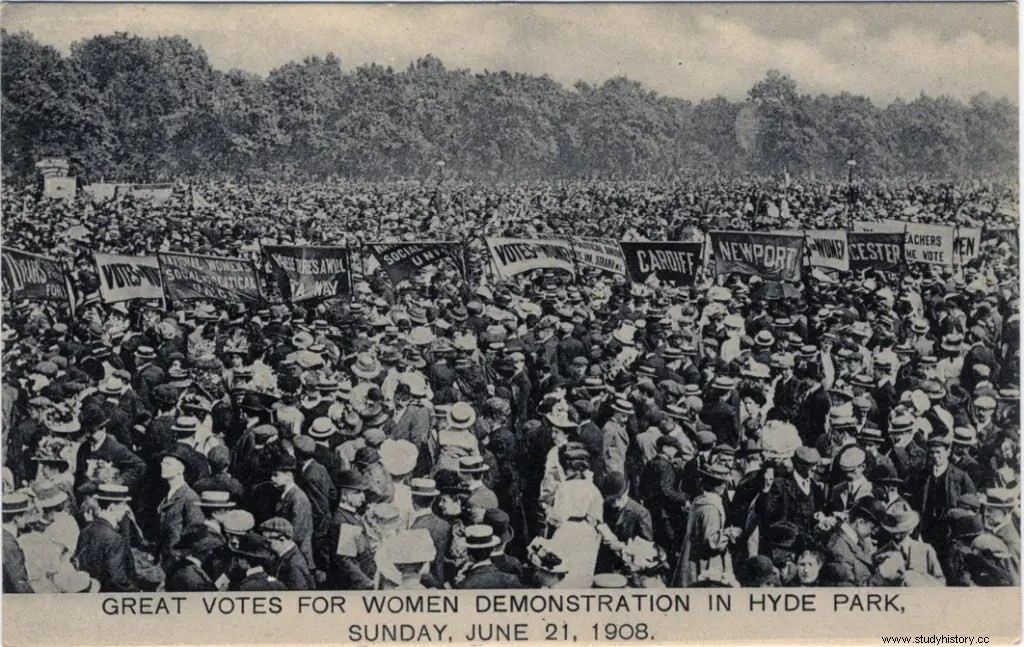
War of attrition between Suffragettes and law enforcement
But these women, whether they are activist activists like Emmeline Pankhurst and her daughters , legalists like Millicent Garret and Selina Cooper , or civic like Theresa Billington Greig , multiply the actions… and the police the arrests.
For their illegal actions , the Suffragettes are regularly arrested. Emmeline, Christabel and Sylvia Pankhusrt in person made several stays in prison. But the judgment in court offers these women an ideal platform for expression. The Suffragettes are indeed very good at using trial publicity to defend the right to vote. As newspapers were widely read in Britain, the press became an effective means of disseminating their ideas.
In 1909, an arrested and imprisoned Suffragette demands the treatment of a political prisoner and begins a hunger strike . She receives an avalanche of support from all over Europe. Soon, all the imprisoned Suffragettes imitate him.
The government then takes a drastic measure by deciding to force-feed the Suffragettes , through the mouth or through the nose:a particularly painful exercise for women, who come out with a swollen face. Public opinion is horrified… 116 doctors send a protest to the Prime Minister, liberal activists leave the party.
Also thanks to the newspapers, the population is better and better informed. Feminist points of view are beginning to be heard. In 1910, Suffragists and Suffragettes count 290,000 supporters.
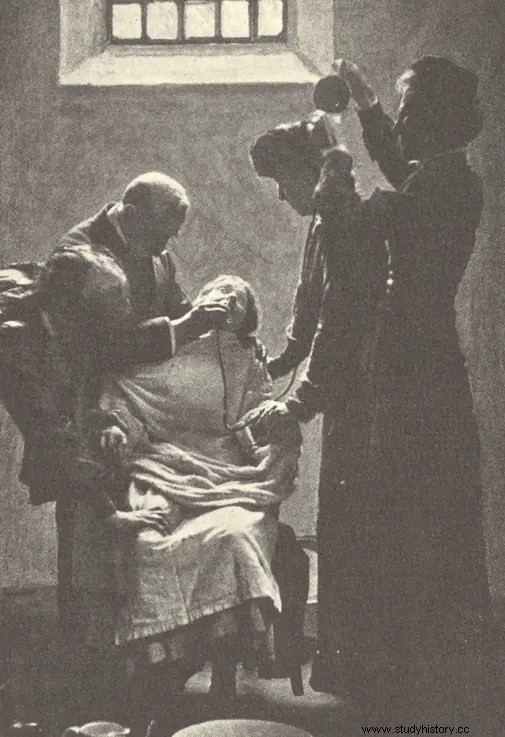
Increased violence
Bills arouse great hope within the party of Emmeline Pankhurst. The disappointment is only greater when the Government does not follow up! The violence starts again. November 18, 1910 , Emmeline Pankhurst, followed by 300 Suffragettes , demonstrated in front of the Parliament against the abandonment of the bills.
Police repression is extremely brutal. Under the orders of the new Minister of the Interior Winston Churchill, 200 women are arrested. On the other hand, the police turn a blind eye when onlookers attack activists, those who have dared to cross " the code of the respectable woman .
The full sister of Emmeline Pankhurst, brutalized by the police, dies of her injuries at Christmas. More than 130 women file complaints against police officers for assault. This day will go down in history as "Black Friday":Black Friday. The Suffragettes even take martial arts lessons so they can defend themselves if attacked!
The 1 st March 1912 , middle-class Suffragettes take to the streets, each with a small gavel hidden in its sleeve. They smash all the windows in West London. The Suffragettes have definitely abandoned peaceful militancy. More than 200 of them were arrested a few weeks later, this time attacking official buildings.
Suffragists begin to regard the Suffragettes as enlightened who don't understand activism, who simply delay their cause.
Sylvia Pankhurst is so radicalized in the violence that she falls out with her mother and her two sisters. At the end of March 1912, the headquarters of the Suffragettes was taken over by the police. Christabel is forced to flee to France, while her mother is already in prison , arrested while trying to deliver a petition to the King. From Paris, the movement becomes clandestine, subversive.
June 4, 1913 takes place the Royal Ebson Derby . During the 3 th race, Suffragette Emily Davison throws herself under the hoofs of the horse racing for the King. She died 4 days later, never having regained consciousness. She becomes martyred of the movement and the Suffragettes organize for her a spectacular funeral .
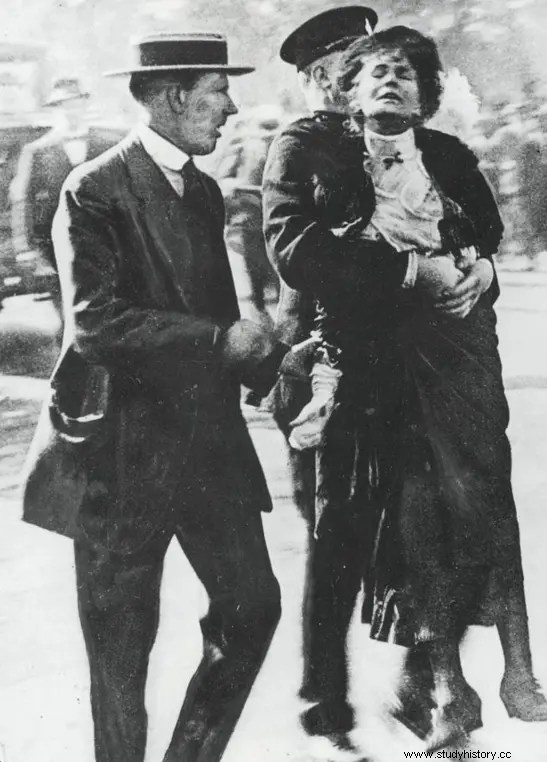
The Suffragettes join the war effort and win 'their war'
In 1914, when Christabel Pankhurst and her mother were reunited again, the First World War stop any action in favor of the right to vote for women.
As arrests continue, Emmeline Pankhurst opts for a new strategy :in exchange for the release of all Suffragettes, they cease all violent action and participate in the war effort working in factories. Deal concluded.
From 1916, some soldiers began to return from the front. Workers for the most part, who demand the right to vote. After what they have been through, the Government recognizes that we cannot refuse them.
Millicent Garret and Emmeline Pankhurst, this time speaking with one voice , exert constant pressure on the deputies:women also contributed a lot to the war effort! They too have lost a lot. The Government, which thought it had finally muzzled the demands of the Suffragists and Suffragettes, could no longer hide. He cannot deny women what he grants men for the same reason. That time is over.
In 1918, Parliament passed the Representation of the People Act :all men over 21, and women over 31 who are married to a man registered on the electoral lists and owners, now have the right to vote. Which means 2 million more men and 6 million women! After 50 years of fighting to change the perception of women in public opinion, this is a considerable success.
It was in July 1928 that a new law establishes perfect equality of the right to vote between men and women. Anyone over the age of 21 can now vote... It will have been a tough fight.
🗝 Board my time machine:I offer you an unprecedented immersive experience in the Secret Cabinet. 🤫
